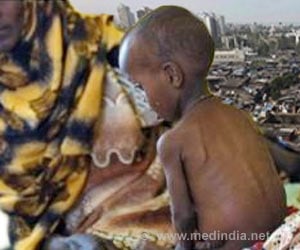Poor socioeconomic conditions as well as insecure nutritional environments are well-known risk factors for chronic undernutrition among children in India.

‘Researchers found the five most important predictors of childhood stunting and chronic undernutrition among children in India.’





Examining an array of 15 well-known risk factors for chronic undernutrition among children in India, the study found that the five top risk factors were essentially markers of poor socioeconomic conditions as well as poor and insecure nutritional environments in children's households. Specifically, using data on nearly 29,000 children aged 6-59 months from the 3rd India National Family Health Survey, conducted in 2005-06 (the latest data that is publicly available), the researchers found that the five most important predictors of childhood stunting and underweight were:
- short maternal stature
- a mother with no education
- extreme poverty
- poor dietary diversity
- maternal underweight
Meanwhile, factors such as Vitamin A, breastfeeding, use of iodized salt, improved water and sanitation, and even immunization --all currently high priority interventions in the global discourse on addressing undernutrition-- accounted for less than 15% of the cases of undernutrition.
"There is an immediate need to not waste time and resources on short-term and 'doable' interventions," said S V Subramanian, professor of population health and geography and senior author of the study. "While asking people to change behaviors and offering piecemeal solutions might provide some short-term relief, such strategies cannot be substituted for the urgent need to improve food and livelihood security."
Advertisement










